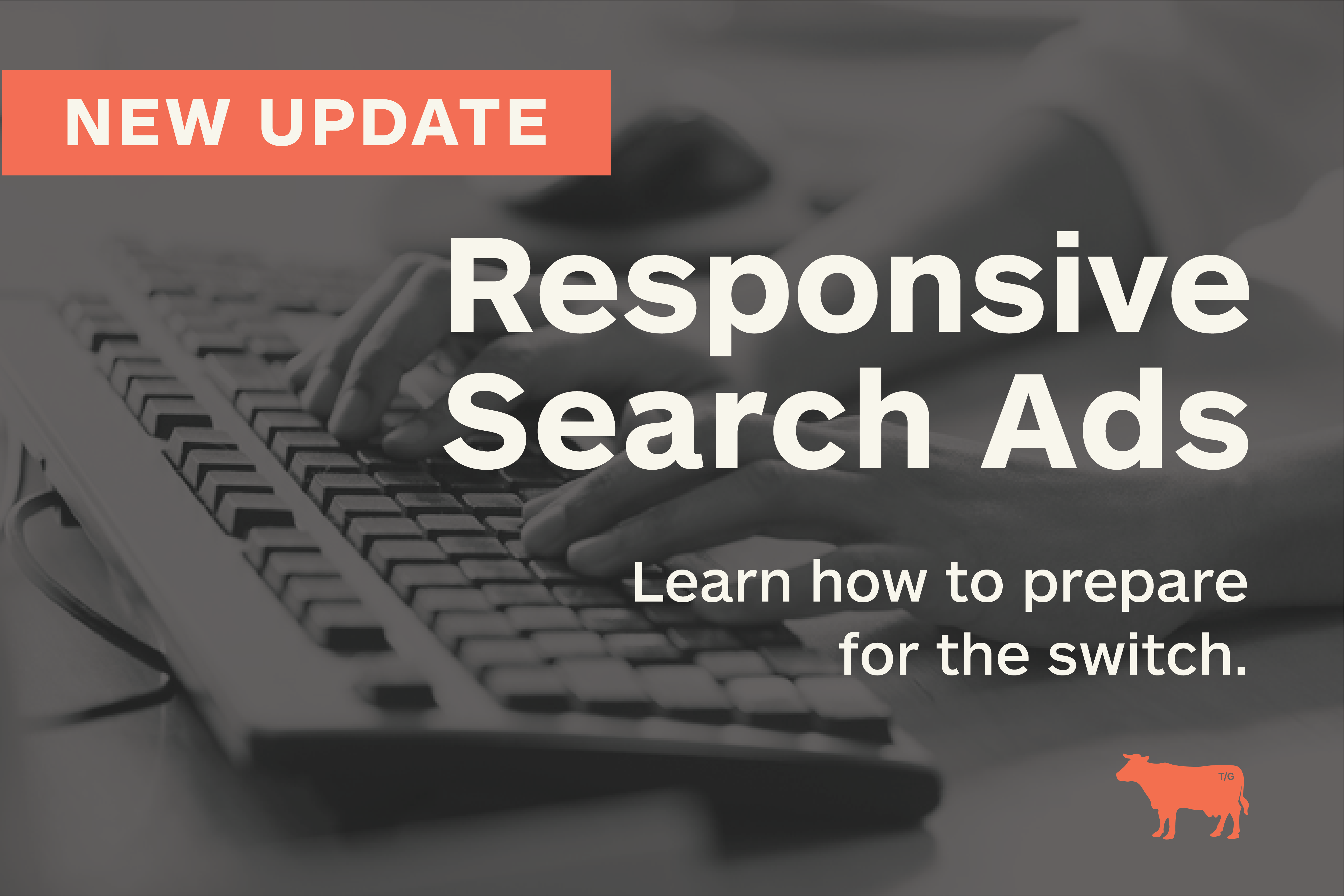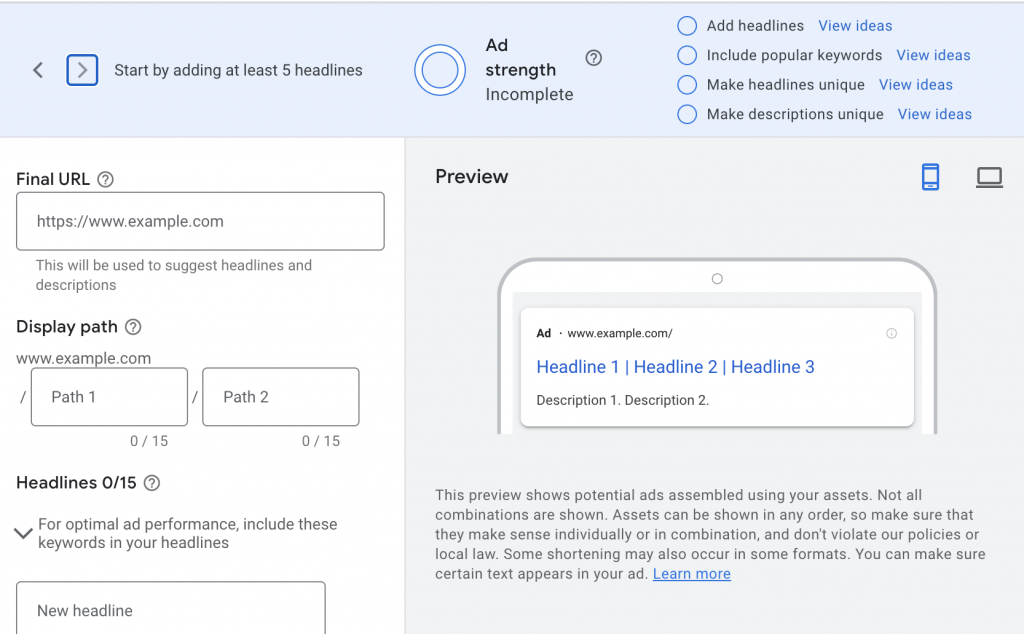
Prepare for the switch in Google Ads
Google is back at it again with yet another mandatory change that will no doubt have an impact on your existing Google Search Campaigns. Google has officially announced that expanded text ads will sunset on June 30th. Responsive Search Ads will now become the only ad format available for new search ads in Google Ads.
Although, you will no longer be able to add or edit extended text ads, all your existing expanded text ads will continue to serve. However, you will only be able to pause, resume or remove them entirely.
What are Responsive Search Ads?
Responsive Search Ads rely on multiple versions of headlines and descriptions that Google’s machine learning will optimize in real-time. Google allows up to 15 different headlines and up to four different descriptions to be used when creating the ad combinations shown in the search results.

User Interface for Google Ads
The goal is to increase engagement by showing the right combination of headlines and descriptions to the right person, on the right device, at the right time.
Difference Between Responsive Search Ads and Expanded Text Ads
Expanded Text Ads are manual text ads that allow for three headlines and two descriptions. This ad type provides much more control over all aspects of your search ads, allowing you to test single variables when optimizing campaigns.
Responsive Search Ads—on the other hand—allow for 15 headlines and four descriptions. Google utilizes AI to test different combinations and determine which combinations perform best from the headlines and descriptions you provide.
Two main distinctions between Responsive Search Ads and Expanded Text Ads are:
- The number of available headlines and descriptions
- Machine Learning vs. Manual Optimizations
How do Responsive Search Ads Work?
With RSAs, Google determines which combination of headlines and descriptions will appear in ads and how often they’ll appear. Don’t worry, you’re not losing complete control, if you have brand or compliance considerations Google provides the option to pin headlines and descriptions, so they will always appear in the position you specify.
Tips for Building a Responsive Search Ad
- Be sure to include keywords in your headlines
- Create unique headlines
- 6-7 headlines minimum
- 2-3 descriptions minimum
- Utilize pinning if you require more control over how your headlines and descriptions appear
Need Help Building Yours?
If you find yourself struggling to set up your first Responsive Search Ad or are not seeing the success you are hoping for with your PPC campaign, our team of digital strategists is here to help! Contact Tayloe/Gray today to start making the most of your pay-per-click marketing.
